For your next Arduino project or a prototype, consider using the humble pine board
A wood base is an inexpensive, easy-to-use construction component for professional-looking Arduino projects.
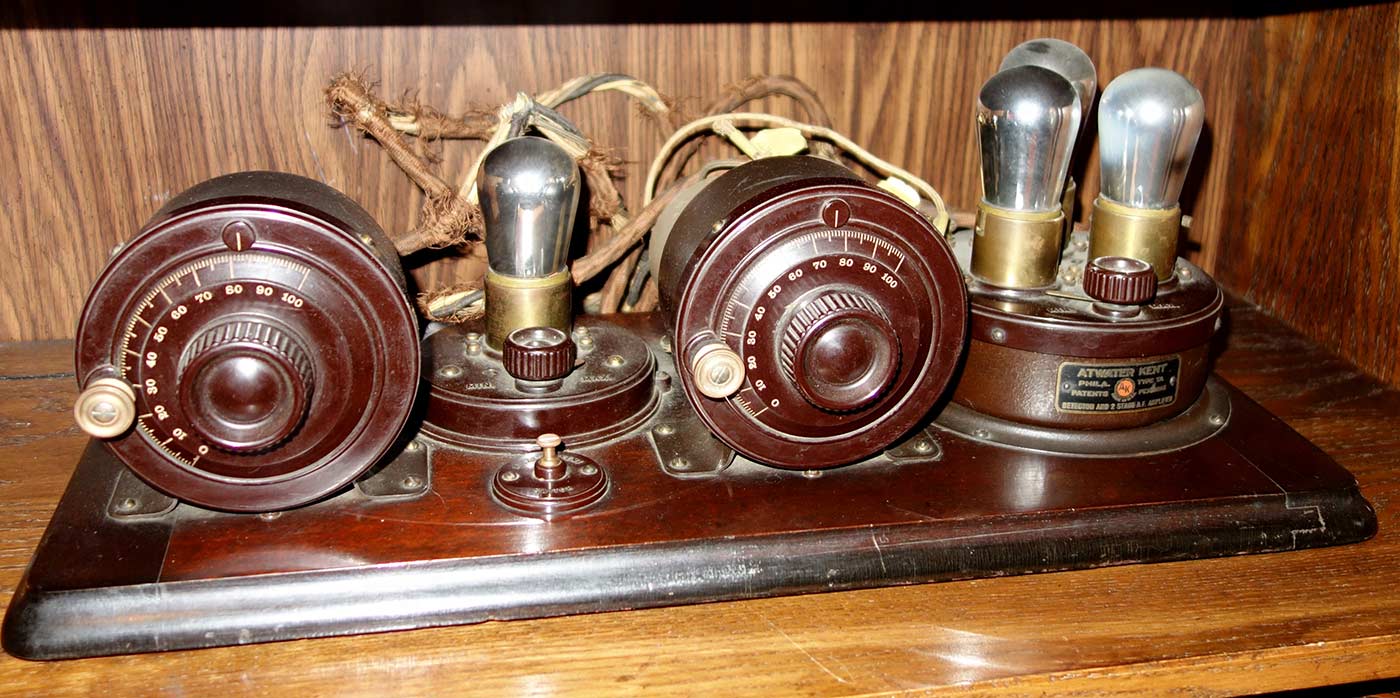 Atwater Kent Type TA detector and 2 stage AF amplifier, in an exhibit at the Bayernhof Museum. (source: Photo taken by Daderot on Wikimedia Commons)
Atwater Kent Type TA detector and 2 stage AF amplifier, in an exhibit at the Bayernhof Museum. (source: Photo taken by Daderot on Wikimedia Commons)
One of the most difficult things about working with an Arduino and its various add-on components is trying to come up with something to hold it all. A metal chassis can be a real pain if you don’t happen to have a well-equipped shop, or at least a decent drill press, and plastic can also be frustrating to work with. There is a solution, however, that’s easy to use and inexpensive: wood. Yes, you read that right. You can build nice, professional-looking Arduino projects with wood. To give you some context, I’d like to share a little history.
The use of wood with electronics actually has a long and illustrious history. Electrical gadgets built in the late 1800s, and early radios built around the start of the 20th century, were constructed with the lamps, vacuum tube (i.e. valve) sockets, switches, and terminal posts mounted directly on a wooden base. The early Atwater-Kent radios were prime examples of this. Go back even further and we can find wood being used as a primary construction component for many early electric devices. Look at some old photos of Edison’s or Tesla’s labs and you can see that the various coils, knife-blade switches, small dynamos, and other assorted gadgets are mounted on wood panels and boxes. Some of these things still exist in museums like the Smithsonian, and some are still in use. The beautiful device pictured below is a laboratory resistance bridge with a Bakelite front panel in a nicely finished hardwood enclosure, built around the middle of the 20th century:
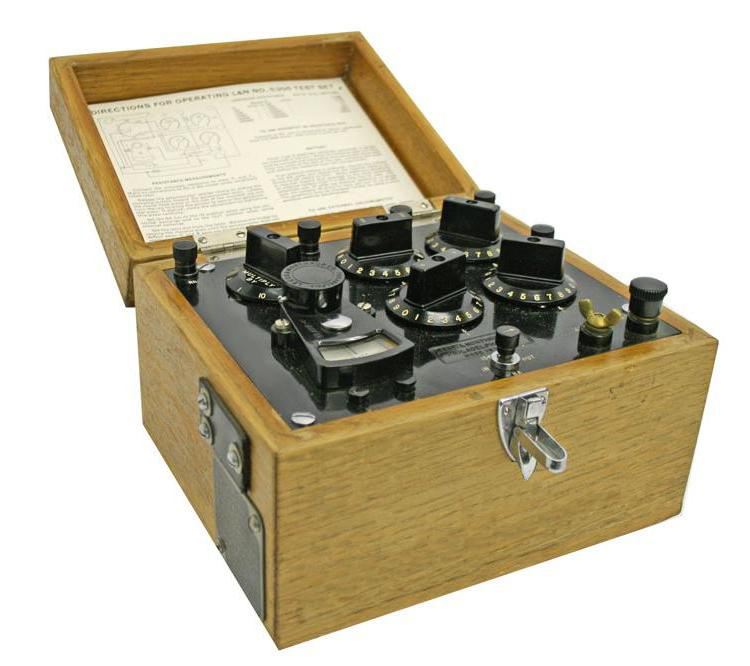
When people started building early electrical circuits, soft aluminum sheets as we know them today did not exist. Also, things made of metal tended to be cast or forged from iron or perhaps hammered brass, were held together with rivets, and were very, very heavy. Plastic didn’t show up until Leo Baekeland invented Bakelite in 1907, and it wasn’t very machinable—things made of Bakelite were cast in molds, and it could be rather brittle. At the start of the 20th century, printed circuit boards, plastic boxes, and aluminum sheet metal enclosures were still in the distant future.
So, without the lightweight metals, plastics, and printed circuit boards that we have today, what was the electrical enthusiast or engineer of 1905 to do? Well, why not just raid the kitchen and make off with the breadboard? It was usually large enough for a small circuit; plus, it was tough, non-conductive, and easy to work with using only hand tools. A good solution—except that someone else in the house might have been annoyed at losing the breadboard.
No one knows for certain (as far as I’m aware), but the term “breadboard” likely arose because either the boards used to mount electrical circuits looked like the kitchen breadboards, or actually were the kitchen breadboards. The important thing was that it was wood. With a hand saw, a hand drill, a screwdriver, and perhaps a hammer, the experimenter was ready to go.
The same approach can be used today to create neat, professional prototypes with a minimum of effort. If you own a hand saw, a drill, and have some small self-tapping screws, then you are ready to get started. Here’s an example of a prototype fixture for an Arduino Mega2560 clone PCB:
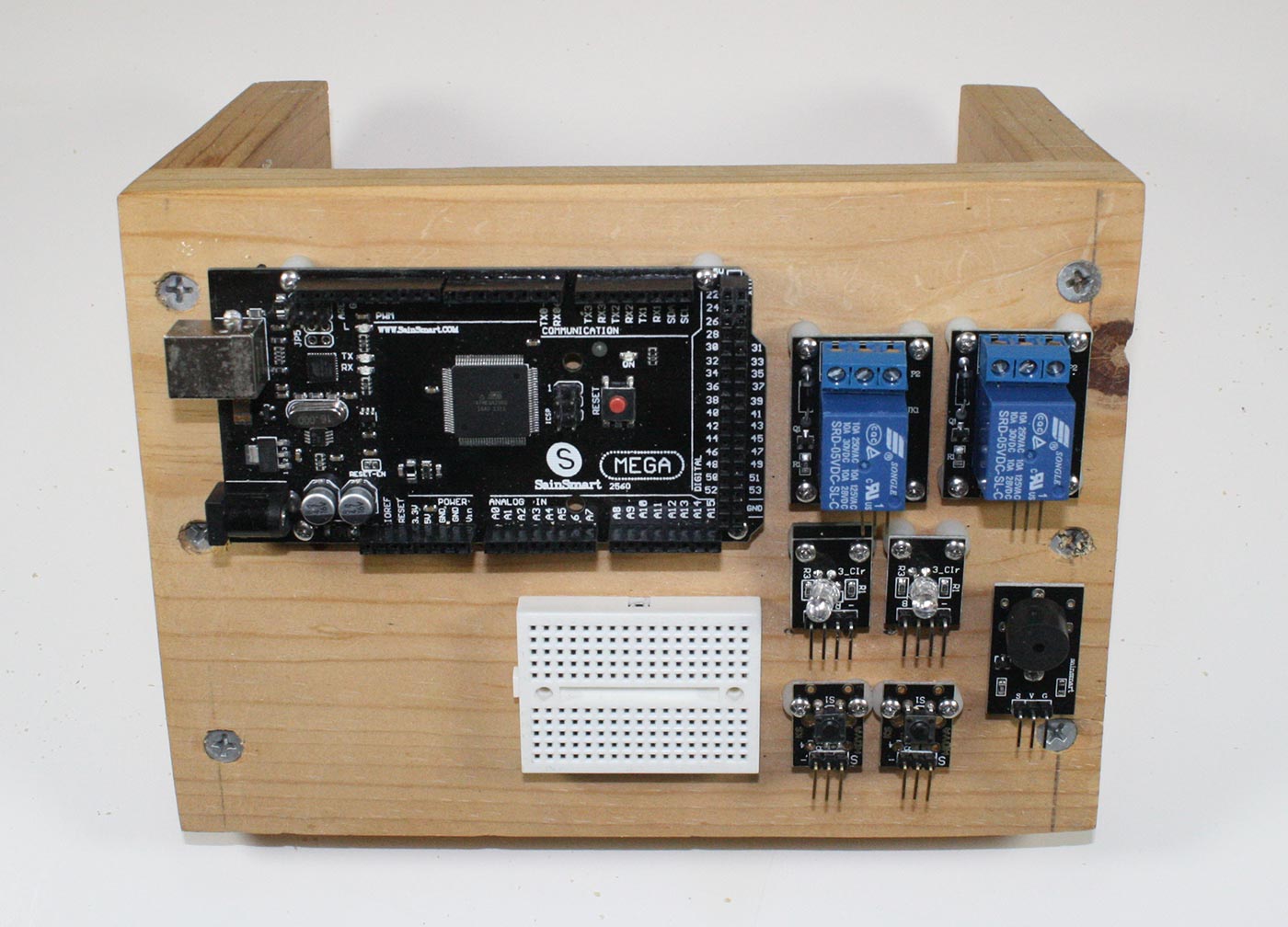
This fixture consists of three pieces of soft pine plank. Two of the pieces are cut so that they allow the main rectangular piece to sit at an angle, but this isn’t really necessary. The figure below shows how the three sections of pine plank are cut to create the finished fixture:
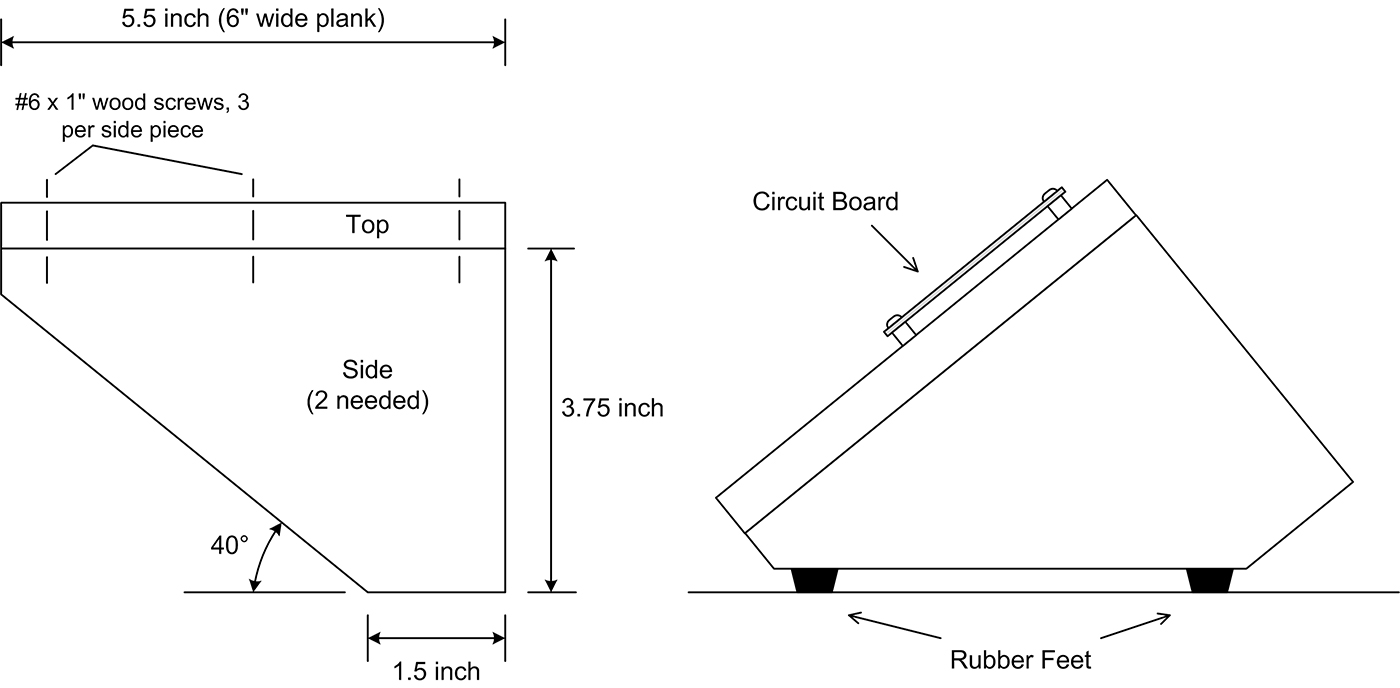
The 40-degree angle is approximate. (That’s what my saw scale read, but I don’t think it’s all that accurate.) Fortunately, it doesn’t really matter so long as both end pieces are cut the same.
If you don’t have woodworking tools, there’s still an easy way to create a nice, but less fancy, wood base. You can even do it without a hand saw if the lumber yard, home improvement store, or hardware store can cut boards for you, as shown below:
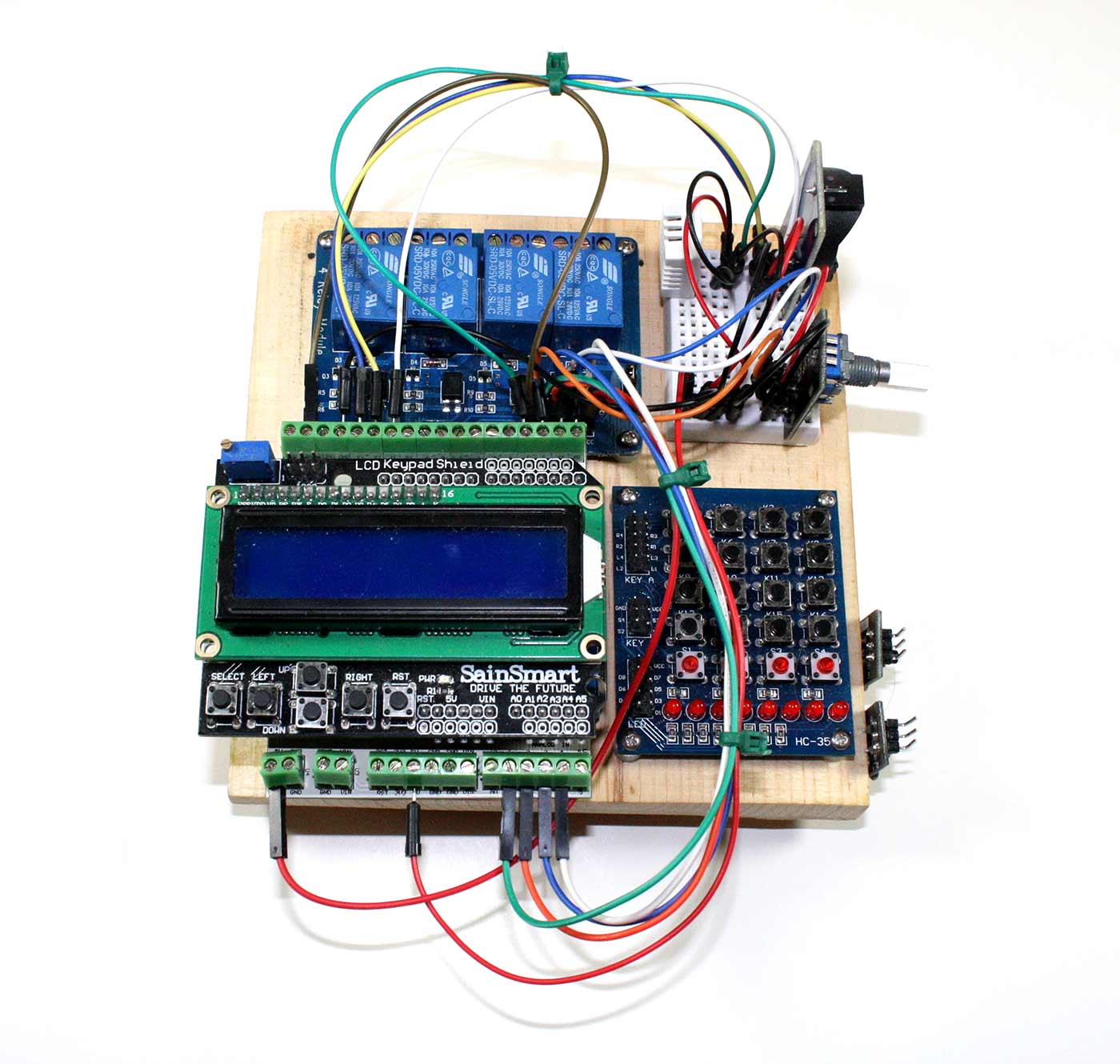
This is just a square piece of 1/2-inch-thick pine board with rubber feet screwed to the bottom, and an Arduino Uno and some other modules attached to the top. In a somewhat ironic twist, both of these prototype fixtures have solderless breadboard modules attached to them.
I recommend soft white pine for such projects since it’s readily available and very easy to work with. I like to use a 6-inch board because it’s large enough to hold most everything I want to attach. You can, of course, use a different width, but I suggest sticking with the 1/2-inch thickness. Thinner wood can split, and thicker planks are unnecessary. If you don’t want the natural wood to show, then you can apply some paint before attaching the various components. Some people go to the trouble to finish the wood with stain and varnish to improve the appearance. I usually don’t bother since I’m more concerned with how it works than how it looks.
Attaching the various PCBs to the board involves some #2 self-tapping screws and spacers. I like to use 1/4-inch long nylon spacers, but small sections of 1/4-inch vinyl tubing (used for drip irrigation and available at most hardware stores and gardening centers) will also work. Don’t use metal tubing for spacers since some PCBs have traces and pads next to the screw holes that could be shorted. Drilling a pilot hole with a small drill bit will help avoid splitting the wood or damaging the screw head from excessive force. I use a PCB drill bit in a rotary tool (also called a Dremel tool) to create the pilot holes after marking them with a pencil.
A wood base for an Arduino and a collection of modules is a nice, neat way to keep things organized and readily accessible. It’s easy to build, and it can be easily re-purposed for different projects by moving jumper wires around. Arduino components are inexpensive, so you can simply make a new fixture rather than try to recycle an existing one. You don’t need a drill press, a power saw, or much of anything else other than what someone would have used 100 years ago to build their project.
A wood fixture can keep things neat and tidy without a rat’s nest of jumper wires and loose PCBs on your workbench or kitchen table, and it will be configured the way you want it. With a little care, the end result can be something that will look right at home on your workbench. Or you can add some stain and a coat of polyurethane varnish to create an interesting item for your desk.
So, the next time you need to build an Arduino project or a prototype, consider using the humble pine board. You will be following in the footsteps of Edison, Tesla, Marconi, and many others.
